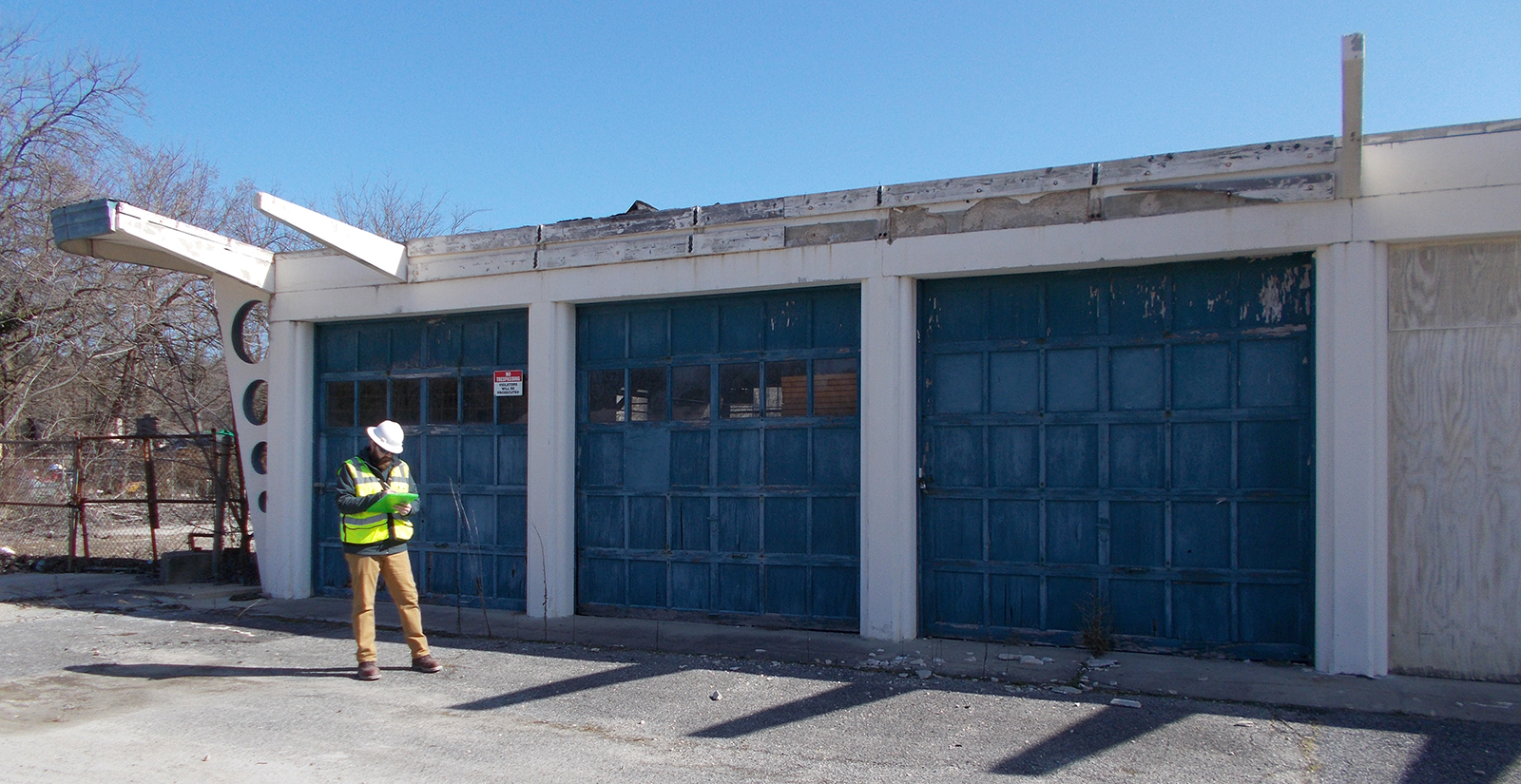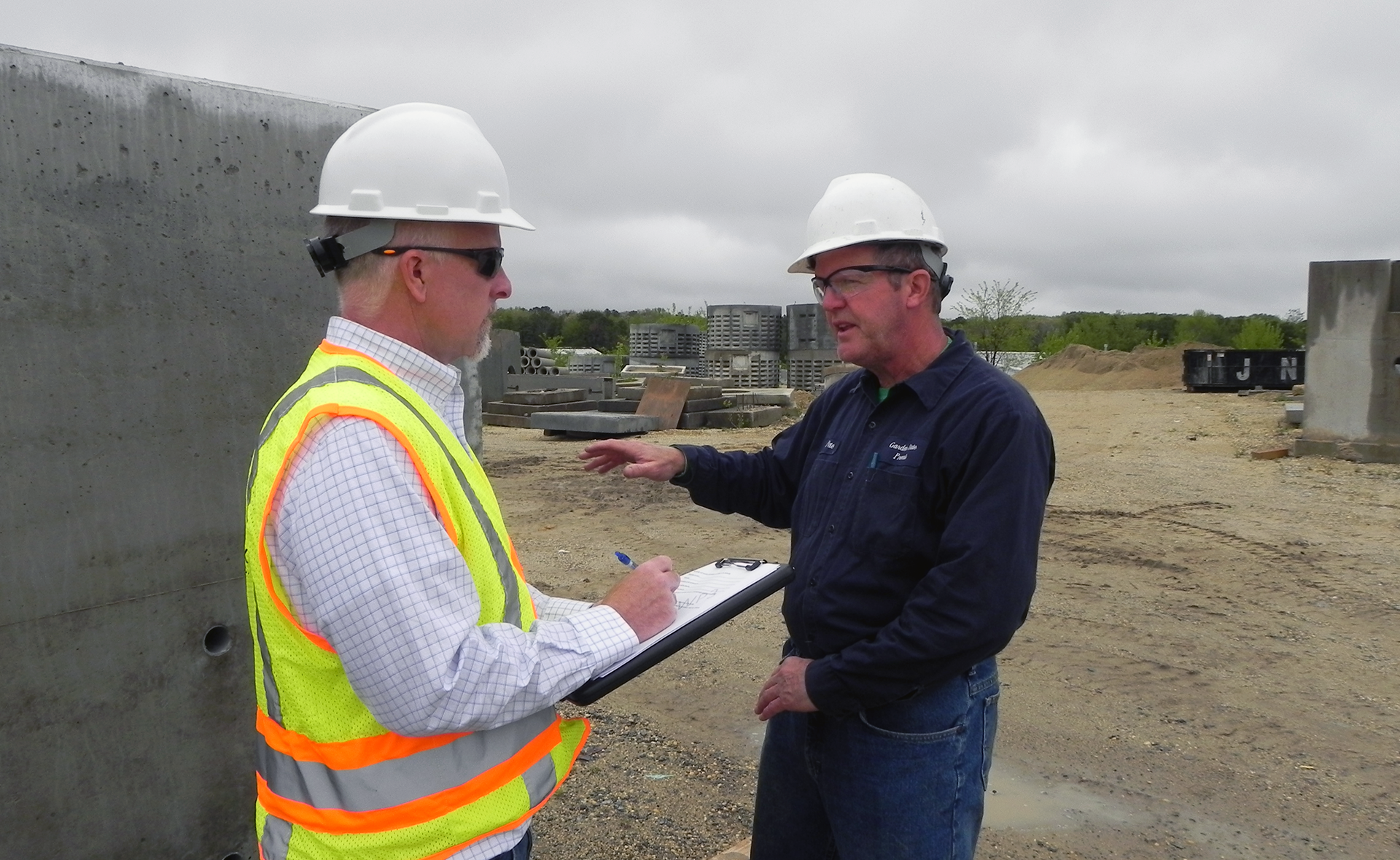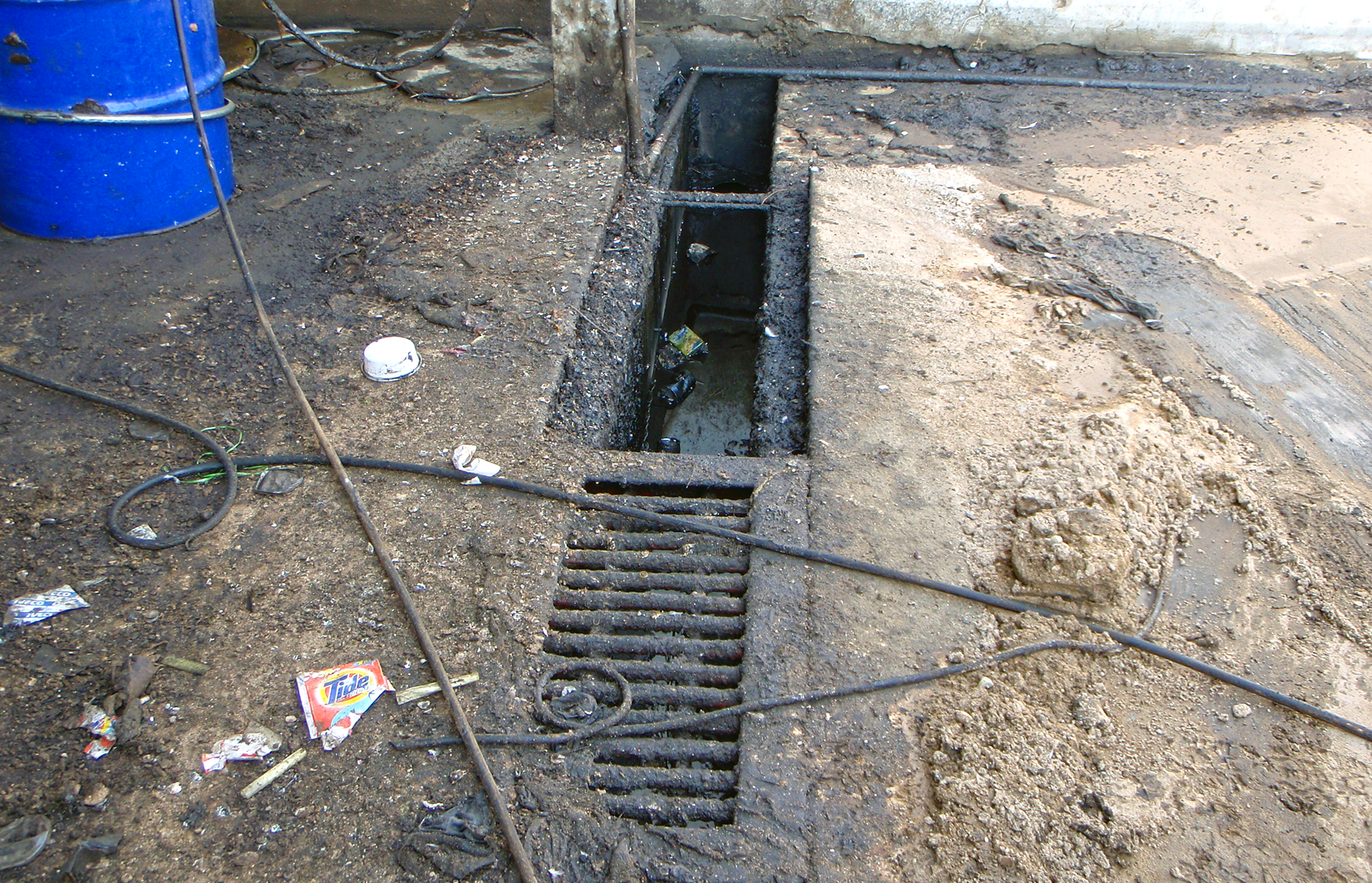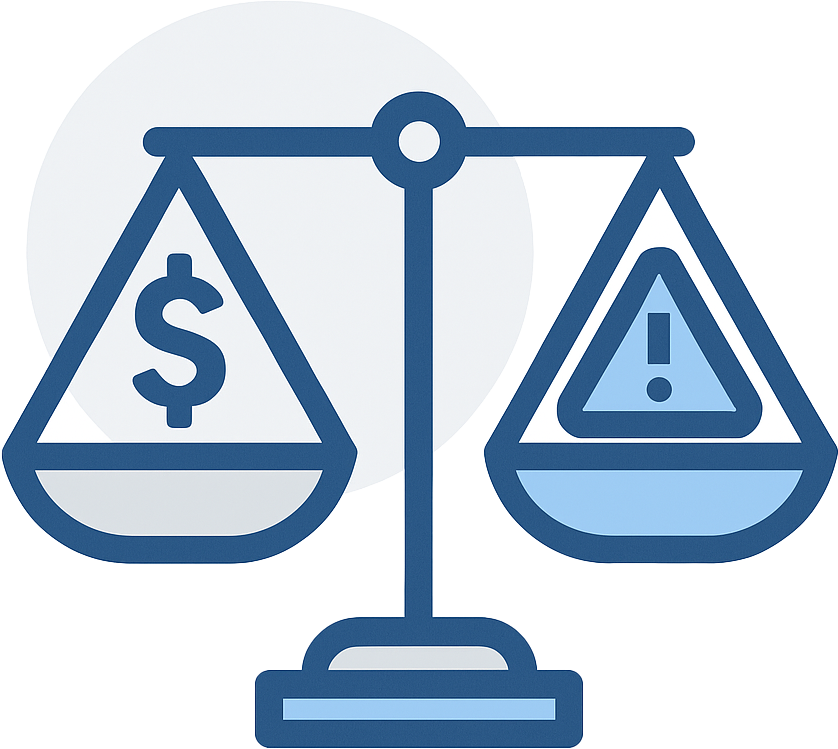Learn what data gaps are in a Phase I ESA.
When it comes to Phase I Environmental Site Assessments, it's pretty common that people either learn about the need for one at the 11th hour during a real-estate transaction, or they flat out forgot and are scrambling to get one quickly. Regardless, just like anything else in this world, when you work fast, and get something done at the last minute, there are inherit risks that you should be aware of, which in this case, are data gaps in a Phase I Environmental Site Assessment.
Just like rushing through a doctors visit or writing that term paper the day before it's due, when things have to happen quickly there are chances things could get missed. Or, if a transaction is happening somewhat in secret, there are times where an environmental professional might be prevented (by the buyer or seller) from discussing the project, or asking questions to current property owners or managers. Either way, when information is missing, these are data gaps. Let's explain.
What are data gaps in a Phase I ESA?
Data gaps are just what they sound like - gaps in data. If something cannot occur during the Phase I process, like inspecting the inside of a building, paper documentation wasn't available to review, or people were not, or could not be interviewed, these would be examples of data gaps.
You might be thinking so what, what will looking inside a building do? What would be bad about not reviewing paper documentation? Let's make some analogies.
Imagine you went to a doctor for a checkup, but told him you only have 5 minutes before you had to leave. Chances are the doc wouldn't be able to give you a full checkup because of the rushed time frame. You might not know the whole picture because of a limitation you placed on the visit.

Now suppose you wanted to buy a used car, but the hood was stuck shut and you couldn't inspect the engine. You might be able to check everything else, but again, without looking under the hood, you might not know the whole picture because of a limitation on the inspection of the vehicle.
Now back to the world of Phase I ESAs. Before we get into data gaps in Phase I Environmental Site Assessments, lets make sure you know what a Phase I is looking for in the first place:
Ok, hopefully that clears a few things up, so now let's look at three hypothetical data gaps that you as the buyer may experience.
Data Gap - Building Interiors
Whether you need a Phase I ESA done in 2 weeks or 2 months, there are times when entering a building just can't happen. Whether it's locked, barricaded, or the seller just won't let us in, not inspecting building interiors would be considered a data gap in a Phase I Environmental Site Assessment. This is fairly common when we deal with multi-unit residential properties, active and busy commercial businesses, or industrial operations with areas that are not safe to enter while in operation.
Why is that a big deal? Short story is sometimes it's a big deal, sometimes it isn't.
At residential properties, not being able to see inside residential units might not be a big deal, but you can never be sure. Most people don't keep petroleum products or hazardous materials in the same place they sleep and eat, but when looking at basements, crawlspaces, or garages, you could find evidence of anything, such as old home heating oil tanks or stored hazardous materials.
Not being able to inspect the interior of a building at an industrial operation could be more problematic since we, the environmental professionals, cannot inspect and record what we observed. There could be anything inside that building, from petroleum tanks, to interior staining, to evidence of improper disposal of oil or hazardous materials. Conversely, the interior of that building may have never been used, and could be clean as a whistle with no evidence of anything ever happening inside it.
The point is, we just don't know what's inside that building, or any building, without looking inside it! Since Phase I ESA reports are fact based, we aren't going to hypothesize about the interior or guess. Instead, we would say we couldn't get inside the building, and it's a data gap.

Data Gaps - Documentation
Here's a common thing we come across when doing a Phase I ESA that's a rush job. One part of the Phase I process is reviewing any and all information regarding a piece of property we can get our hands on, so we'll submit FOIA (Freedom of Information Act) Requests to various government agencies to find out if they have any information on a piece of property. Some agencies get back you immediately, while some take days, or weeks, to respond.
As you can imagine, if the project were working on has a 2-week deadline, and a state environmental agency doesn't respond for 3 weeks, then we won't even know if there's documentation to review until the Phase I was already completed.
Even worse, there are times when an agency will respond right away that yes, they do have physical documentation (usually a stack of unorganized paper) for us to sift through regarding the property, but they may have a several week waiting period to get in and review that material. Again, if a report needs to be done in 14 days, and we aren't allowed to visit a department office for 30+ days, then that information isn't going into the Phase I report.
The documentation at agency offices can be any number of things, from detailed information regarding contamination, to past cleanup efforts, to detailed notes on site visits, regulatory records, etc. It could also be misfiled information for another property (as we often see), or notes about unrelated matters that are not of concern to a Phase I.
Again, point being that without us viewing that information, we just aren't sure what's there. We cannot make heads or tails of the information if we never see the information in the first place. It could be something awful that should stop a transaction dead in it's tracks, or it could be something benign that has no bearing on the purchase, you just don't know.
If you purchase a piece of property without getting all the information up front, the reality is you could be responsible for dealing with the contamination and cleanup costs. As you can imagine, dealing with contamination can be an expensive headache, so whenever possible, give yourself enough time and allow the Phase I to collect as much information as possible. Generally 30 - 60 days is enough time to complete a Phase I ESA and collect all relevant information. Any shorter, and you're putting your investment, property, and business at risk.

Data Gaps - Interviews
One part of the Phase I ESA that can become a data gap easily is the interview process. A Phase I ESA done by the books should include interviews with site representatives - current property owner, property manager, tenets, buyer, seller, neighbors, previous owners, regulatory personnel, etc. These people can help educate us on the various aspects of the property, from current and past use, to any environmental issues, to development history, to information about surrounding properties and local information, and more.
Why is an interview important? The same reason you interview a new hire, or you take someone out on a date, or you ask your grandpa about when he was a kid. An interview, during the Phase I ESA process, can provide a plethora of information that might not be otherwise available or obtainable. It can also help us to learn if we think anyone might not be telling the truth or is trying to hide information. Conversely, we've also had instances where a property manager told us about a bad practice they knew of (usually some type of illegal dumping or handling of materials that could lead to contamination) because they "didn't think doing that was a big deal!"
Now what happens if there is no one at the property to talk to? Or the seller doesn't want to let his employees know the company is changing hands, and we aren't allowed to talk to site representatives? Simple, these are... you guessed it! Data gaps!
Again, the issue here is since we aren't getting more information, we aren't sure what we're missing out on. You just don't know, good or bad, what that information could have been, and since we aren't making wild guesses, the lack of interviews would be a data gap in the Phase I ESA.

Other Data Gaps in Phase I Environmental Site Assessments
Can there be other types of data gaps in a Phase I ESA? You bet.
If we are conducting a Phase I ESA on forested land, and the property is very large, walking the entire property, and the entire interior, might not occur due to thick vegetation. That's a data gap in the Phase I.
Maybe we aren't allowed to reach out to local or county agencies to ask about the property due to secrecy around the purchase. Again, that's a data gap in the Phase I ESA. And yes, we do run into this, especially in smaller towns across the country where everyone knows everyone.
If there's snow on the ground at the time of the site inspection, that would prevent us from seeing exterior staining, stressed vegetation, dumping, or other concerns. Again, data gaps in the Phase I ESA.
As you can probably guess by now, anything that would prevent us from completing a Phase I ESA to scope would become a data gap.

Are data gaps in a Phase I ESA bad?
A data gap is missing information in a Phase I Environmental Site Assessment. If the information isn't there for us to review, we don't know what it could be, so it's impossible to say if it's a good or bad thing. So are data gaps in a Phase I ESA bad? Much like a data gap, that is unknown without additional information.
There are times when other forms of information can help us gauge whether a data gap could have a considerable bearing on the Phase I ESA report. For example, if records indicate the property used to have a engine repair shop on-site, but we can't get into the interior of a garage building to see what's there, then yes, that data gap might be "bad" since it could having bearing on the Phase I ESA.
Conversely if we couldn't enter a newly constructed, small, single family residential home, that data gap might not be "bad" since there's most likely nothing inside the dwelling that would have any bearing on the report.
If we can't talk to someone, but the records obtained and reviewed paint a fairly accurate and complete history of the use and ownership of the property, the lack of interviews likely wouldn't have any bearing on the Phase I, and may not be a "bad" thing.
So there is no way to say that a data gap in a Phase I Environmental Site Assessment is a bad thing without having the entire Phase I, or all the other data that is available to review and reference.
Is it bad if you rush in and out of a doctors office in 5 minutes? Maybe! If you're healthy as a horse it's probably not an issue, but if you have something that takes time to diagnose then yes, rushing is bad.
Is it bad if you can't look under the hood of a car before you buy it? If you can turn the car on, it runs ok, and isn't smoking, shaking, or making crazy noises, than it's probably not an issue, but if the car won't start, then yes, not looking under the hood is probably a bad thing.
Point is, there are many things to consider when it comes to data gaps in a Phase I ESA, and it's almost impossible to say they're nothing to worry about, or cause for concern, without looking at the entire Phase I ESA project.
Here's some additional information on the outcomes of a Phase I ESA and what finding "bad" things could mean:

What happens if a data gaps in the Phase I Environmental Site Assessment really are bad?
If a data gap in a Phase I Environmental Site Assessment might have bearing on the report, there are two options.
- You steamroll ahead with completing the report with the data gaps. Sometimes there's nothing you can do about it, and in that case, you have to live with the data gap, regardless of it's bearing on the report.
- You pump the brakes and let the professionals do their job. If a data gap was occurring because of a rushed time frame on a project, and it's possible to push it back at all, then do that. Giving us a week, two, or three, can have a huge bearing on the report, and can allow us to review all the relevant information we can get our hands on.
Either way, know full and well that the data gap could cause issues with the liability protection a Phase I ESA offers, especially if it's a self-inflicted data gap (such as you, the buyer, putting a short project time frame on us, the environmental professionals, to meet your deadline). Be prepared that the data gap could have very real, and very expensive, real world consequences.
And worst comes to worst, you might need a Phase II ESA. You can learn more about that here:

How can I avoid data gaps in my Phase I ESA?
Like we said, some data gaps are unavoidable. Sometimes a door is locked on a building, and no one has a key. Sometimes vegetation has made accessing the inside of a building, or inspecting the grounds of a property impossible. Sometimes interviews aren't possible for whatever reason. Some things you cannot avoid, and sometimes there will be a data gap.
But, there are times when data gaps can be avoided. The easiest way to avoid data gaps in a Phase I Environmental Site Assessment is simple - plan accordingly. Be aware of how long a Phase I ESA takes to complete, and plan around that. If you want to close on a transaction is a few days, you need to understand that your Phase I ESA will have numerous data gaps that may prevent you from obtaining the liability protection you're looking for. Conversely, if you plan ahead and give us plenty of time to conduct the Phase I, then data gaps should be at a minimum.
Here's some additional Phase I ESA information which covers the basics, which hopefully should help clear up any questions you may still have:
So, if you're looking to purchase a piece of property, and are starting to pull everything together, don't forget about the Phase I ESA process, the time it takes, and how any last minute time restrictions on your end could impact your decision. Regardless of where you are in the purchasing process, if you're looking for more information about Phase I Environmental Site Assessments, we're here to help.
If you're wondering about the ins and outs of getting a Phase I, we'd love to talk. We work with clients all over the United States on Phase I projects, whether they're new to the subject, or seasoned veterans, and we'd love to learn if we're the right company to help you and your business when it comes to Phase I work. Feel free to give us a call anytime at 888-RMA-0230, shoot us an email at info@rmagreen.com, or click here to contact us online.



















